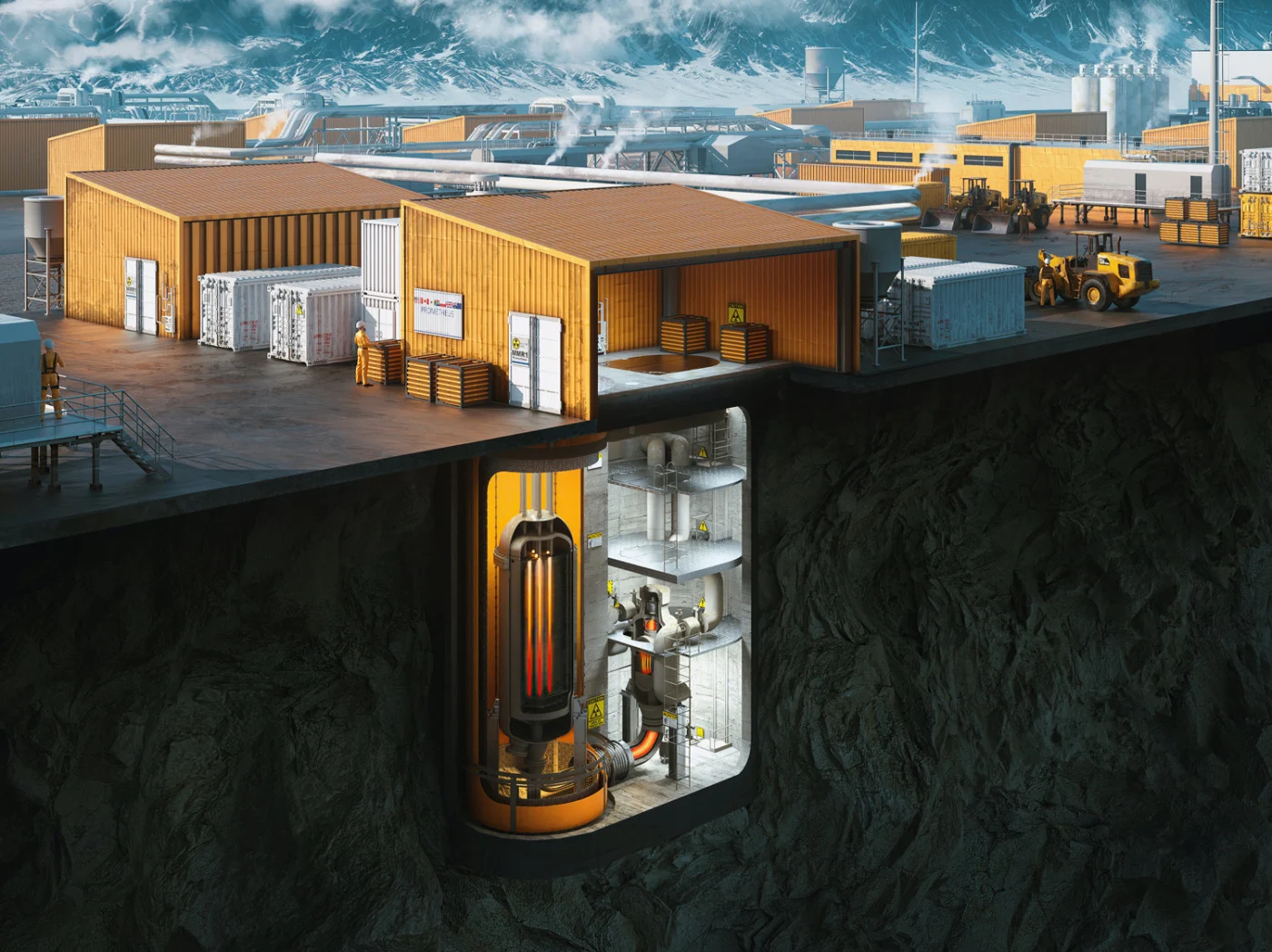
A first for Canada: New type of nuclear plant opening by 2028
Small, transportable modules could emerge as future nuclear plants are distributed across Canada.
Significant technological advancements have been made in nuclear energy over the past decades and it is being increasingly developed in Canada and other countries that are looking to lower their greenhouse gas emissions.
Nuclear energy is one of the more divisive carbon-free energies due to historic disasters and the disproportionate impacts that nuclear waste has had on marginalized communities. What’s clear is the confidence that many nations have in improving the safety of this energy, and experts say a major growth in this sector is just around the corner.
In March 2022 the energy ministers from Alberta, Saskatchewan, Ontario, and New Brunswick announced a joint strategic plan to develop innovative nuclear energy facilities. A small modular reactor (SMR) is planned for construction at the Chalk River Laboratories site in Ontario by 2028, which will be a first-of-its-kind in Canada. New Brunswick could see its first SMR in 2030 and Saskatchewn intends to construct their own by the mid 2030s.
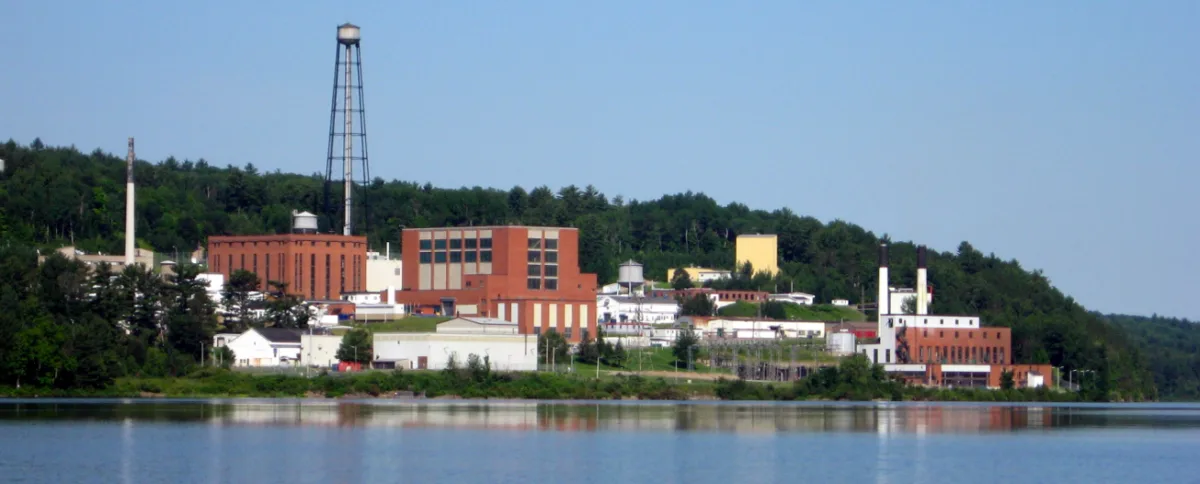
Chalk River Laboratories seen from Ottawa River, Ontario. Chalk River is considered to be the epicenter of nuclear research in Canada because of the large facilities where fundamental research for a number of industries is conducted. (Padraic Ryan/ Wikimedia Commons) (CC BY-SA 3.0)
SMRs are nuclear reactors that typically produce up to 300 megawatts (MW) of electricity, which is enough energy to power 300,000 homes for one year. SMRs can also support remote off-grid communities and supply power to existing grids.
“Currently, the [Chalk River] project is scheduled to come online around 2026 or 2027, which would make it Canada's first operating SMR,” Ken Darlington, VP of Corporate Development at Ultra Safe Nuclear Corporation (USNC), told The Weather Network.
USNC is a developer of micro modular nuclear reactor (MMR) technology and focuses on off-grid and remote markets to displace fossil fuels for electricity and heat generation. Every MMR is an SMR, as SMR is a broad term used for small modular reactors.
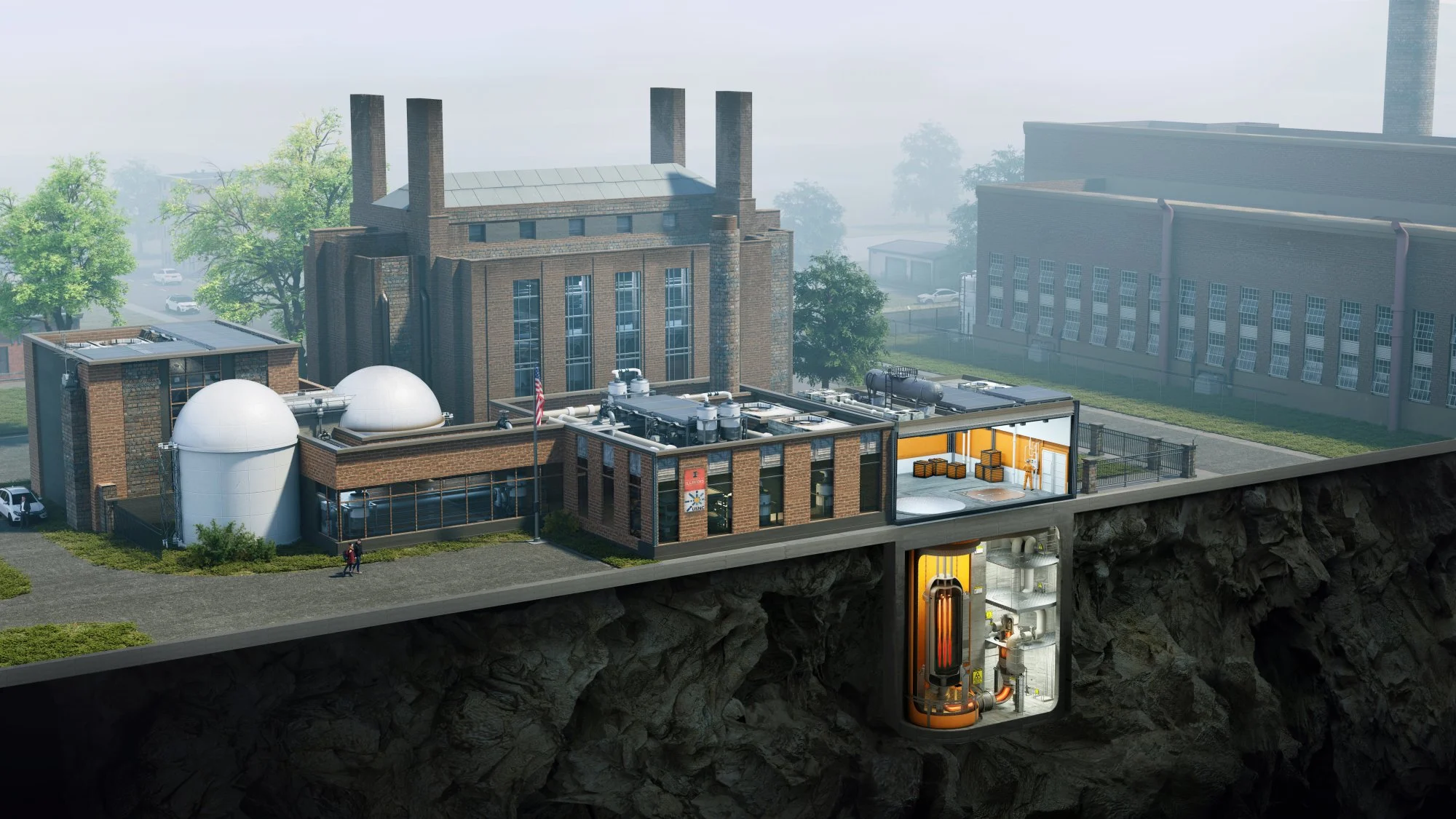
A rendering of USNC’s micro modular nuclear reactor. (USNC)
Darlington noted that Canada’s extensive land mass means that many northern and remote communities rely on diesel, a costly fossil fuel that releases significant amounts of greenhouse gases.
In terms of Canada’s national strategy to step away from fossil fuels as an energy source, Darlington said that time is of the essence for nuclear research and development.
“I personally don't believe there's a path to net zero without nuclear energy in the mix. Our reactors enable smaller communities and our resources sector to decarbonize. On a larger scale, looking at other current and future nuclear technologies needed to get to net zero in Canada, these technologies will need to be implemented with other clean technologies if we want to succeed in that goal.”
TECHNOLOGICAL DIFFERENCES FROM OLDER NUCLEAR PLANTS
USNC’s MMR technology is considerably different from the traditional nuclear plants of the past for a number of reasons.
Simply put, conventional nuclear plants split uranium atoms to release a significant amount of heat. This heat boils water, turning it into steam that rises and spins turbines to generate energy. Cooling towers are used to cool the steam to convert it back into water, which is then reused.
Used fuel contains radioactive material, which is extremely hazardous to human health, and can leak out of its containment areas if some type of damage occurs to the nuclear plant. One example is the Fukushima Daiichi Accident (2011), which happened when an earthquake-triggered tsunami crashed into the nuclear plant and caused three nuclear meltdowns that leaked radioactive materials for several days.
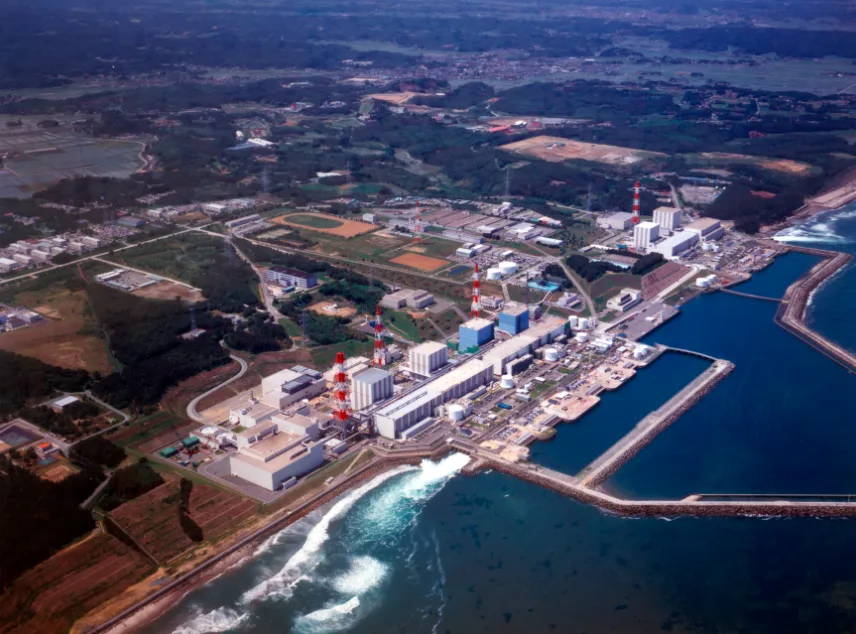
An aerial view of Fukushima Daichi Nuclear Power Station in Fukushima, Japan captured on February 21, 2007. (TEPCO/ Wikimedia Commons)(CC BY-SA 2.0)
Darlington said that SMRs are often referred to as “fourth generation advanced nuclear technology” that was designed to never release any radioactive materials into the environment.
The SMR’s reactor vessel, which is transportable and the size of a tanker truck, comes pre-fuelled and acts as a “nuclear battery.” The fuel inside of this vessel are solid kernels made from a mix of uranium, carbon, and oxygen, with each being roughly the size of a poppy seed. These kernels, which are covered in several ceramic coatings, are then encased in a diamond-like substance, which USNC calls Fully Ceramic Micro-Encapsulated (FCM) Fuel.
“The radioactive materials stay fully encased for their entire life and beyond. It's a very robust, strong fuel that's designed to make sure it indefinitely keeps the fuel safely inside the pellet,” Darlington said.
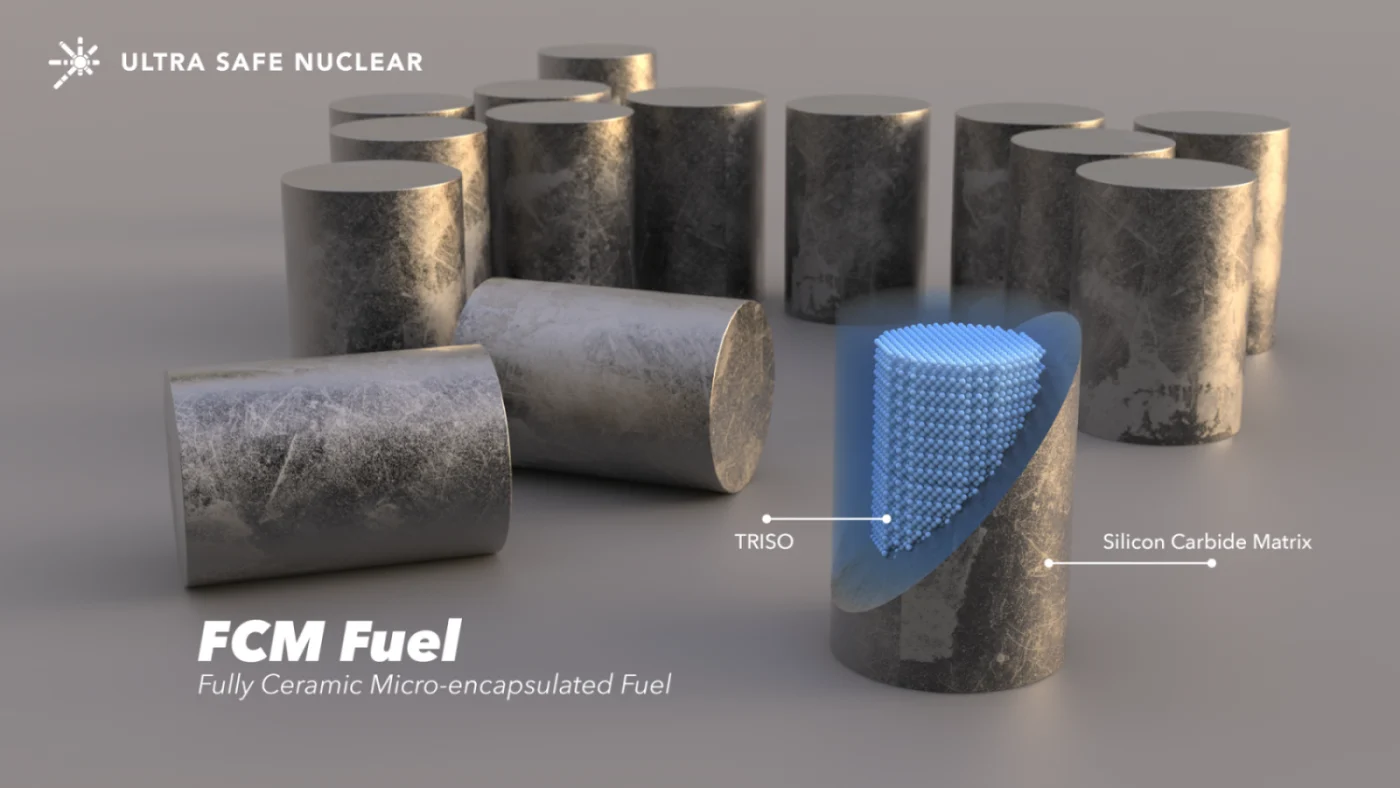
The silicon carbine used in USNC’s FCM Fuel is the diamond-like substance that helps encase the radioactive materials. (USNC)
The fuel pellets are stacked into graphite blocks where helium gas flows through cooling channels to moderate temperatures. USNC says the benefit of using helium is that it does not react with the fuel or main parts of the reactor and remains free of radioactive products.
Some of the main differences that the MMR has from conventional nuclear plants is that the reactor cannot meltdown as the heat is passively released into the environment, does not need any active systems to remove heat, and requires no on-site fuel storage, handling, or processing. These aspects are why USNC has dubbed this design a “walk-away safe reactor” that can last for 20 years once installed.
Darlington explains that during the decommissioning process, the core of the reactor could be replaced or the reactor could be removed and enter the federally regulated nuclear waste stream.
David Novog, a nuclear energy professor at McMaster University, explains that there is currently zero nuclear waste buried in Canada and that spent nuclear fuel is stored at the facilities where it was used to generate electricity. However, this could change in the future.
“The proposed long term vision is that we would develop a site and right now there's two sites that are being developed and explored for long term repository. So the goal of this is to find a really old rock formation, one that's hundreds of thousands of years old and hasn't moved in a very long time, and to bore into this rock and use that as a long term repository.”
CONSULTING LOCAL COMMUNITIES
Chalk River Laboratories, where Canada’s first SMR is planned for construction, is what Novog describes as the nation’s “epicentre of nuclear research” and has over 50 facilities and laboratories where research is conducted.
Communities and regions in eastern Ontario that are located near Chalk River have historically expressed concern about nuclear energy and mistrust of the organizations that oversee nuclear activity, particularly communities that have been historically oppressed by the governing bodies in Canada.
Some concerns also stem from several nuclear accidents that occurred at Chalk River in the 1950s. Ottawa Riverkeeper, a grassroots charity, states in a blog published in February 2022 that “several Waste Management Areas at the Chalk River site that have caused contamination of the groundwater, which continues to be released into the freshwater streams and lakes of the region to this day.”
“[There’s] nothing that I am aware of today,” Novog stated when asked if radioactive materials are currently being released from Chalk River.
“Chalk River is what we call a legacy nuclear site. Work was done there even during World War 2 in terms of developing and supporting the U.S. nuclear energy efforts and weapons. When we have a site that is that old, we have safety officers in every building. We track down to the gram for every level of contamination that we have in any facility. But it wasn't always that way in the 1950s and 1960s.”
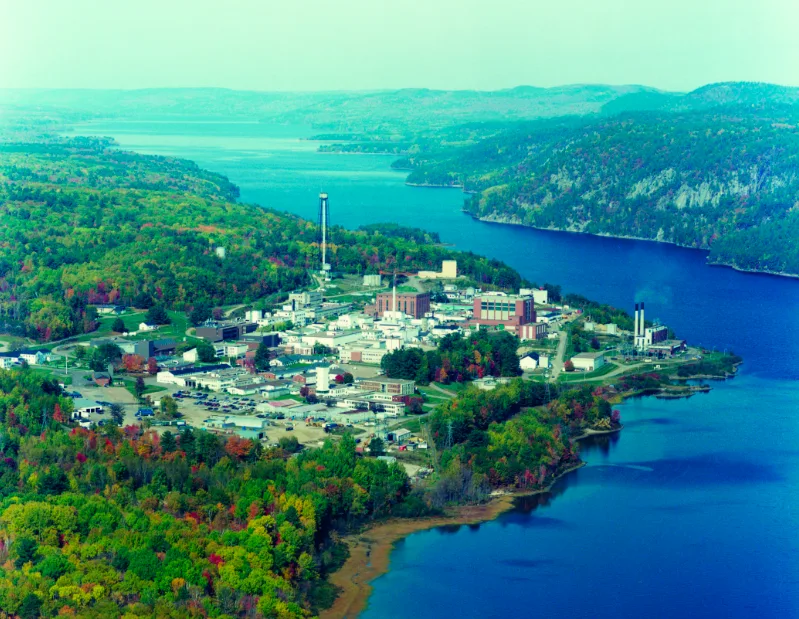
An aerial view of Chalk River Laboratories in Ontario, Canada. (Government of Canada)
Eric McGoey, communications and engagement director for Global First Power, told The Weather Network that consultation with local Indigenous communities has been an essential aspect of developing the SMR at Chalk River.
“We’re talking to Algonquin communities on the Ontario side of the Ottawa River, Algonquin communities on the Quebec side of the Ottawa River, Métis communities, and the Mississauga communities that are part of the Williams Treaties First Nations whose treaty territory includes the Ottawa Valley.”
Understanding how SMRs impact the environment and people that live closely with the land will be essential for transitioning northern and remote communities from diesel to a carbon-free energy source. McGoey notes that building relationships with Indigenous communities that could one day opt for SMRs must be done in a meaningful way.
"Canada's shame is our mistreatment of Indigenous peoples and the legacy of colonialism. And if we don't build our projects in a way that is inclusive and that brings tangible benefits to Indigenous communities, this will have been a massive miscalculation," said McGoey.
"There are some communities that are just not going to be interested in nuclear power in their territory for a very long time. And we have to respect that. That's going to be slow work, but it's really important work."
Novog says that what makes SMRs particularly suitable for electrifying remote and northern communities is the “equalization and quality of life and equalization in costs” that diesel does not provide.
“There’s a lot of extra things you can do with SMR energy. The natural waste heat can heat a greenhouse, you can establish agriculture facilities connected to the SMR energy source, which provides a massive benefit to the community. You can think of the reactors in the North as an hub for a whole bunch of tangential benefits.”
“When you start looking at it, you can start seeing how not just the energy problem can be solved, but much more.”
LIFE WITH NUCLEAR ENERGY
According to a survey by the Canadian Nuclear Association published in 2021, 86 per cent of Canadians believe the government should invest in clean technologies including renewables and nuclear energy, but nearly half (42 per cent) say they need to understand more to form an opinion about this energy source.
When asked why nuclear energy is such a taboo topic, Novog cited the severe social and economic consequences that historic nuclear accidents have had, which stays in peoples’ long term memories.
McMaster University, roughly a one-hour drive from Toronto, is home to the largest research reactor in Canada and the university offers tours to the public to provide an opportunity to learn more about nuclear energy.

The McMaster Nuclear Reactor (MNR) first became operational in 1959 and is a world leader in the production of iodine-125, a radioactive isotope that is used in the treatment of prostate cancer, with hundreds of doses produced each week. (McMaster University)
“We bring people into McMaster because we have a 5 MW reactor on campus. We have students all around, people live in the community very close to the reactor, and it's sort of like a model of how these reactors could fit into communities. You can actually see used nuclear fuel. It’s not a taboo topic because we can show everybody the different elements of nuclear energy, from fresh fuel to the reactor to medical isotopes.”
“Some of our highest support for nuclear energy is in the community surrounding our nuclear power plants or nuclear research facilities. And that's not surprising, because they get to know the technology the best by interacting with their neighbors or being employees at the sites.”
Under Canada’s SMR Action Plan, released December 2020, the federal government stated that $100 million will be invested in three major projects and 100 partners, including governments, industry, and Indigenous peoples will collaborate to advance SMRs.
Despite the complex nature of this energy source, split public opinion, and emerging technologies that have yet to be commercialized — what’s clear is that big bets are being made on nuclear energy in Canada, and concrete developments are likely coming much sooner than what some may think.
Thumbnail credit: USNC

